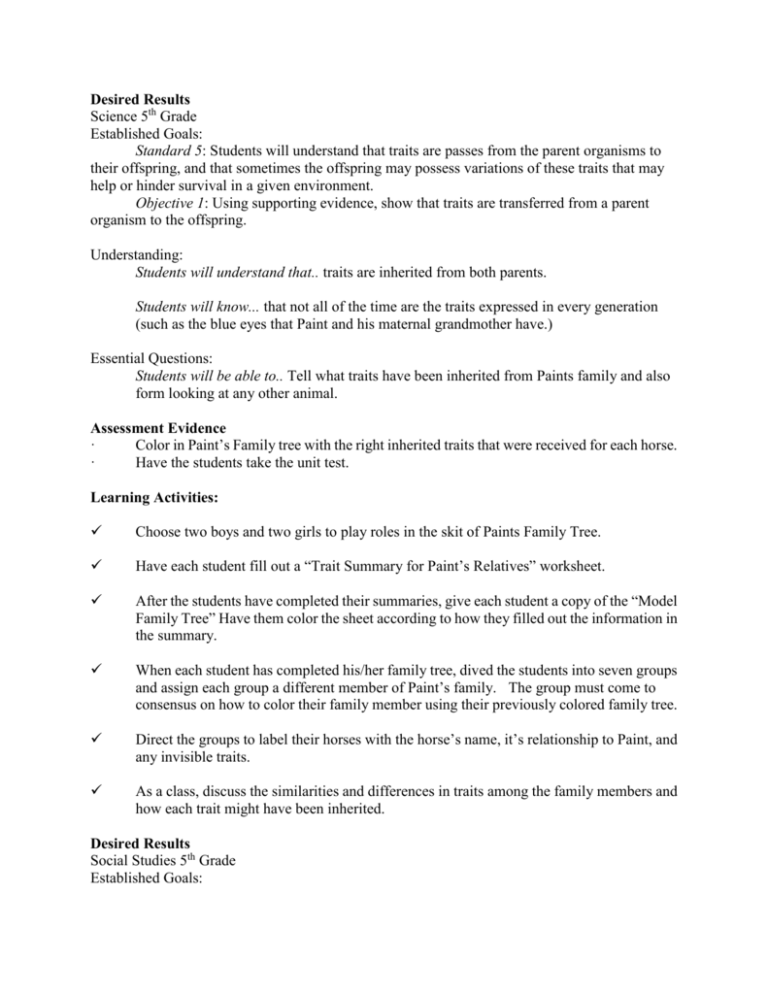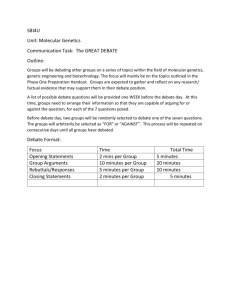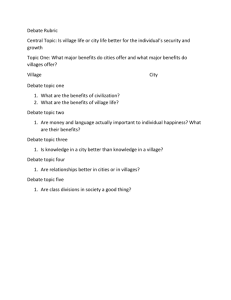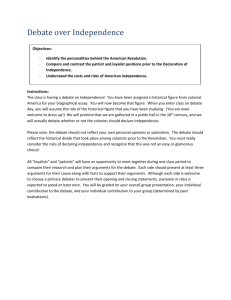Desired Results Science 5th Grade Established Goals: Standard 5
advertisement

Desired Results Science 5th Grade Established Goals: Standard 5: Students will understand that traits are passes from the parent organisms to their offspring, and that sometimes the offspring may possess variations of these traits that may help or hinder survival in a given environment. Objective 1: Using supporting evidence, show that traits are transferred from a parent organism to the offspring. Understanding: Students will understand that.. traits are inherited from both parents. Students will know... that not all of the time are the traits expressed in every generation (such as the blue eyes that Paint and his maternal grandmother have.) Essential Questions: Students will be able to.. Tell what traits have been inherited from Paints family and also form looking at any other animal. Assessment Evidence · Color in Paint’s Family tree with the right inherited traits that were received for each horse. · Have the students take the unit test. Learning Activities: Choose two boys and two girls to play roles in the skit of Paints Family Tree. Have each student fill out a “Trait Summary for Paint’s Relatives” worksheet. After the students have completed their summaries, give each student a copy of the “Model Family Tree” Have them color the sheet according to how they filled out the information in the summary. When each student has completed his/her family tree, dived the students into seven groups and assign each group a different member of Paint’s family. The group must come to consensus on how to color their family member using their previously colored family tree. Direct the groups to label their horses with the horse’s name, it’s relationship to Paint, and any invisible traits. As a class, discuss the similarities and differences in traits among the family members and how each trait might have been inherited. Desired Results Social Studies 5th Grade Established Goals: Standard 2: Students will understand the chronology and significance of key events leading to self-government. Objective 2 Evaluate the Revolutionary War's impact on self-rule. Understanding: Students will understand how.. the revolutionary war effected many people. Students will know... about the revolutionary war and why it took place. Also, the war’s impact on self-rule. Essential Questions: Students will be able to.. debate as a tool for discussing the Revolutionary War. Assessment Evidence After the debate, summarize the main ideas of the Revolutionary War. Ask questions and discuss how the children felt about being on different sides with opposing views. Discuss empathy and other social concerns. Learning Activities: Before the Debate: 1. Divide the class into two debate teams. Determine who will be on each team by making an equal number of "P” for patriots" and "L” for loyalists letters on paper squares for a drawing. 2. Arrange the room into two rows of desks facing each other. The Loyalists and Patriots should be facing each other. 3. (3-4 days before the debate) Have the students look up additional information about the Revolutionary War from various resources. Each team member should write down some facts to address during the debate. Both teams should gather to discuss strategies, to make summary statements, and to practice before the debate. During the Debate: 1. Begin the debate. Allow the students to debate their views about war, allegiance to country, freedom, taxes, etc. Go back and forth from team to team and encourage the students to voice facts. 2. Encourage both teams to make rebuttal remarks and to come up with original ideas that have not yet been discussed in the debate. 3. Allow the debate to continue until no new information is given. 4. Before ending the debate, encourage students to become more powerful in making stronger comments for their teams and move along at a quicker, more exciting pace. 5. Finally, ask for a summary statement from each team. After the Debate: The teacher will have to help with this. Deduct points for wrong information, rude remarks, etc. The class winners will be the team with the most points. Desired Results Health Education 5th Grade Established Goals: Standard 6: The students will understand how a healthy diet and exercise can increase the likelihood of physical and mental wellness. Understanding: Students will understand that.. Their eating habits can improve by evaluating their choices. Students will know... the amount and type of food that a person their age consumes in a day. Essential Questions: Students will be able to.. Plan out a nutritious diet for the week. Assessment Evidence Students will plan a diet that fills all the categories of the USDA Dietary Guidelines. Have each student write a short paper about what he/she learned from this experience and how he/she plans to improve his/her diet. Learning Activities: Think about all the foods you ate yesterday? Can you remember everything you did? · You can only evaluate and improve what you can remember. Think about all the foods you ate yesterday? Can you remember everything you did? We are going to play a game today and tomorrow to see how accurately you can keep track of this information. Assign the students to keep a record of one day's food intake and activity level (see Daily Intake, Activity 24- 1 and Daily Intake Evaluation, 24-1B) · Discuss each dietary guideline with the students as they review their daily intake records. As each guideline is discussed, they should mark the foods they have eaten with a "+" or a "_", depending on how that food fits into the dietary guidelines. How did the activity level correspond with the amounts of foods eaten? Point out that it is difficult to evaluate each food for each guideline. Most guidelines refer to overall eating habits. You need to look at the entire day to evaluate variety and nutrient richness of foods, amount of fat and sugar, etc. ALMOST ANY FOOD CAN FIT INTO THE GUIDELINE IF the rest of the daily intake is appropriate. The concern comes when there are many foods which deviate from the guidelines! · DIETARY PROBLEMS: Have each student identify problem areas. He/she should identify any dietary habits that could lead to serious health problems in the future. Some examples are: A. Eating on the run, paying little attention to what and how much you are eating. B. Eating too fast. C. Eating when upset, sad, angry, or depressed; relating food to feelings rather than fuel. D. Eating too much nutrient poor food. E. Eating the wrong amounts of food. As you get older or out of shape, your activity level must increase of food intake must decrease. F. Eating too many fast foods that have lots of fat. They are often lacking in vegetables and fiber. However, many establishments are now offering light and fat free dressings for salads, no-fat muffins, 99 fat-free shakes and frozen yogurt, etc. McDonald now offers kids a choice between fries and applesauce, or carrots. These kinds of changes make eating out more nutritious.





